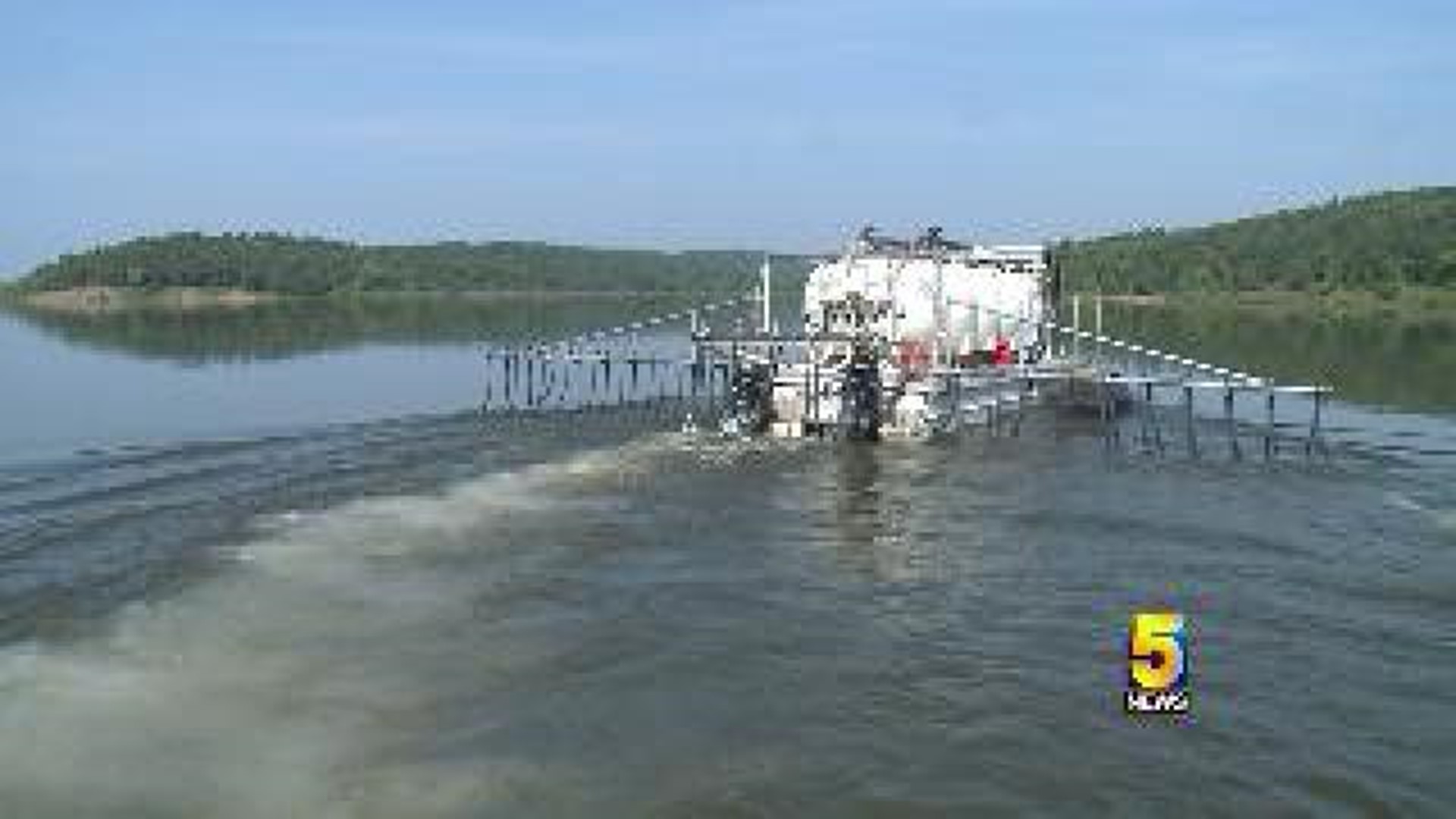WISTER (KFSM)--Wister Lake is the source of drinking water for most of LeFlore County as well as parts of Latimer and Haskell Counties.
“In the summertime like this, in a lot of our lakes around here, and in Lake Erie when you got a lot of phosphorous, it favors blue-green algae over other kinds of algae,” Steve Patterson, PH.D. Restoration Ecologist said.
This can produce toxins, which was what was seen Saturday in Toledo, Ohio. Now ecologists are working to combat any algae threats closer to home.
“We’re doing a leg treatment, adding a chemical to the water that does several things, the purpose is to try to improve the water quality, reduce the amount of blue-green algae and or bacteria,” Patterson said.
The Poteau Valley Improvement Authority is wrapping up an Innovate Nutrient Activation project in just one cove of Lake Wister, as treating the whole lake would cost millions of dollars. This project costs about $100,000.
“The chemical we’re using is alum,” Patterson said. “It’s a real common. Every water treatment plant, every sewer plant uses alum, but this is the first time it’s been done in Oklahoma or Arkansas.”
“We’re definitely seeing an increase in the algae and phosphorus problems all across the United States, and the alum is certainly becoming a preferred solution to some of those issues,” John Holz, a water quality specialist with HAB Aquatic Solutions said.
Experts say this alum approach has been a success in other parts of the country for removing phosphorous build-up. This fuels the grown of potentially harmful blue-green algae, which is caused by temperatures and lakes warming up accompanied by increased nutrients in the water.
“Phosphorous is a fertilizer that [feeds] algae and causes more algae to grow in the water,” Patterson said.
“We’re officed in Lincoln Nebraska, but we work all over the United States doing alum applications to lakes,” Holz said.
He said this treatment will in turn increase water clarity and reduce phosphorus concentrations and toxins in the lake.
Ecologists say this kind of treatment will prevent toxins from making it through the treatment plant like it did in Toledo. Wednesday’s (Aug. 6) test results will measure the clarity of the water and bacteria levels. In another week, officials will be able to better determine the long-tern results of the alum.

